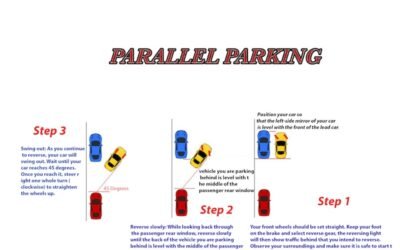Roundabouts are a common type of junction in the UK, where traffic flows clockwise around a central island and gives way to traffic coming from the right. They are designed to keep traffic moving smoothly and safely, without the need for traffic lights or stop signs. However, many learner drivers find roundabouts daunting and confusing, especially when they encounter large or busy ones. In this article, we will explain how to deal with roundabouts in England, step by step, from checking the roundabout map to knowing where the exit is, to signalling, positioning, and leaving the roundabout.
Checking the Roundabout Map
The first step to dealing with a roundabout is to check the roundabout map as you approach. It shows you the layout of the roundabout and the exits. It also shows you the destinations and road numbers for each exit. You should use this information to plan your route and choose the correct lane for your exit.
The roundabout map is very useful for the pupils to know where the exit is located and what the name of the exit is. The exit is located according to the position of the arrow on the roundabout map.
You should always look at the roundabout map carefully and identify which exit you need to take, and whether it is before, at, or after 12 o’clock. You should also note the name of the exit and the road number or the destination that is shown on the roundabout map. This will help you decide which signal and position to use on the roundabout.
Signalling
The second step is to signal your intention to other road users. The basic rule of signalling on roundabouts is:
– If your exit is up to 12 o’clock, signal left when you take the next exit.
– If your exit is after 12 o’clock, signal right when approaching the roundabout and signal left before exiting.
You should signal as early as possible, but not so early that you confuse other drivers.
Positioning
The third step is to position your car in the correct lane for your exit. The basic rule of positioning on roundabouts is:
– If your exit is up to 12 o’clock, use the left lane by default, unless the road markings say otherwise.
– If your exit is after 12 o’clock, use the middle or right lane, depending on the road markings and the number of exits.
However, some roundabouts may have different lane markings or signs that indicate otherwise, so you should always follow them. You should also check your mirrors and blind spots before changing lanes, and give way to any traffic that is already on the roundabout or approaching from your right.
Leaving the Roundabout
The final step is to leave the roundabout safely and smoothly. You should maintain a steady speed and avoid braking or accelerating harshly on the roundabout unless you need to avoid a hazard or adjust to the traffic flow. You should also keep an eye on the exit signs and road markings, and start to move towards your exit as you approach it. You should signal left as you pass the exit before yours, and check your mirrors and blind spots before leaving the roundabout. You should also make sure that you exit in the same lane as you entered unless the road markings or signs tell you otherwise.
Spiral Roundabouts
Some roundabouts are more complex and have multiple lanes that change position as you go around them. These are called spiral roundabouts or gyratories, and they are usually found in large or busy junctions. They have more traffic lights and signs to guide you, but they also require more attention and skill to navigate them correctly.
To deal with spiral roundabouts, you need to follow the same steps as normal roundabouts, but with some additional considerations:
- Check the signs and markings carefully, as they may show you which lane to use for each exit, and how the lanes will move around the roundabout.
- Signal correctly, as you may need to change your signal as you change lanes on the roundabout. – Stay in your lane and follow the white lines, as they will guide you to your exit. Do not cut across other lanes or straddle the lines, which could cause collisions or confusion with other drivers. Keep a safe distance from the car in front of you, and be prepared to stop at the traffic lights if they change.
– Leave the roundabout in the same lane as you entered, unless the signs or markings tell you otherwise.
When it comes to navigating roundabouts, it’s important to follow a systematic approach that includes checking the roundabout map, signalling, positioning, and smoothly exiting the junction. By following these steps, drivers can navigate roundabouts with confidence, which helps to ensure safer and more efficient traffic flow on the roads.



0 Comments